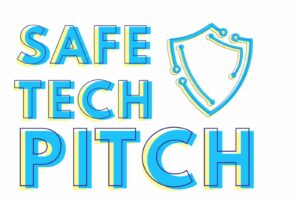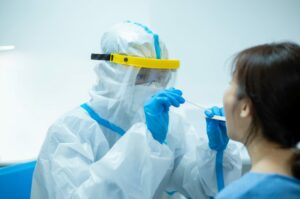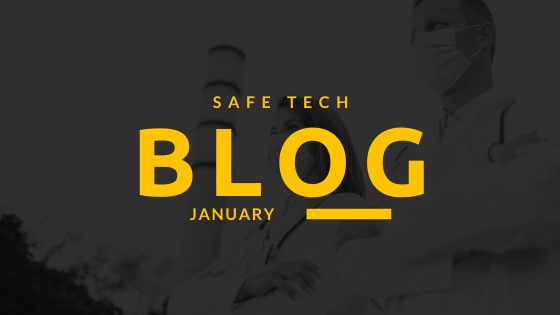Looking Back at 2020
Let’s call Thursday, March 4, 2020, specifically sometime after 4:00 pm (more on this later), Day One. That’s the first day COVID-19 began affecting my family, team, businesses, and community. My friend, deviant dinner host, and fellow government disruptor Molly Cain took the proactive measure to cancel GovCity at SXSW 2020. Within hours more events were scrapped, and on March 6, the City of Austin, TX, called off SXSW. Now canceling 400,000 visitors and preventing an estimated $355 million of economic activity in the State of Texas, that is what we call an eye-opener. Not having SXSW in 2020 was my first real indication that whatever COVID-19 was, it was severe and could get worse.
Reflecting on Day One, I recall the following:
1.) My five-month-old company was launching; note, not starting, launching. Entering 2020, we had two employees; in January 2020, we began growing exponentially, going from 2-4-8-16, then 20 by March 5, 2020. On Day One, I had to start messaging our team regarding the axing of SXSW and canceling our pre-paid travel reservations. On top of that, I was worried about the tens of thousands of dollars in sponsorships we had put up to officially launch Make Safe Tech, Inc., our membership-based 501c3, at SXSW 2020.
a. I went back and checked my email in the aftermath of SXSW’s cancellation, and my first event cancellation notification came at 4:44 pm on Thursday, March 5. When I went to cancel our travel reservations, they all had fully refundable, seven-day advance cancelation policies if canceled by 4:00 pm. Since we were checking in on Thursday, March 11, 2020, we lost 50% of all travel reservations. I remember thinking the announcements had intentionally been postponed until after 4:00 pm to minimize the travel industry’s impact that was about to experience a bust.
2.) I thought about my family. I have three kiddos under eight-years-old and one in public school at the time. I recall thinking, “Good thing Spring Break is coming. We can all get away from school and the crowds and go camping or hang out at the house.”
3.) I thought about fundraising. We had just raised $1.5 M in Q1, 2020, halfway to our goal. I remember being proud and thinking, let’s let up on the fundraising through the end of March so we can see how COVID-19 is going to affect the markets.
a. On Day One, I thought COVID-19 would make a devastating impact on travel, events, and business. Austin just canceled a $355 Million event – what would be next?
b. On Day One, I thought COVID-19 would only impact March 2020, and by the end of April, we would be right back at it.
4.) I thought about public safety, first responders, and our armed forces. Every time we go home, when things get rough, they head to the front lines. I prayed for their safety and that they would have the right technology for them to combat this unforeseen pandemic.
Reader’s Note: I spent the first 11.5 years of my career working for the world’s largest, and in my opinion, the best, emergency response training organization, the Texas A&M Engineering Extension Service (TEEX). Along with my amazing team, from 2016-2019, we managed a Technology Transition Program for the Department of Defense (Defense to Response). Advancing technologies that enhance public safety, first response, and our armed forces is my passion. In the beginning, my “Why” was identifying cool technologies that allowed me to be given the tag line, “If you need to Burn it, Break it, or Blow it up, give me a call.” I have tested counter-IED systems, weapon systems, environmentally friendly fire chemicals, lightweight ballistics, and non-pyrotechnic flash-bangs. Today my “Why” is motivated by my three kids, keeping schools and public facilities safe and preventing Line of Duty Deaths.
Monday, January 4, 2021: Day One in a Full Year of COVID-19
January 4, 2021 was a very different day in the COVID-19 world for me. I was much more informed about the impacts and devastation that the virus would cause. The pandemic had now impacted members of my extended family. Friends and colleagues that I know have lost loved ones to COVID-19. I now know I should have bought stock in Zoom before 2020, as every event throughout the year went virtual. As a matter of fact, in 2020 Safe Tech hosted our first Safe Tech Pitch, all virtually, and gave away $25,000 to companies developing technology for our first responders and armed forces.

Day One of Work in 2021 started without several small businesses that had been lost in 2020. All hospitality operations were at reduced capacities here in Texas; roll back precautions are in the works to further reduce occupancy rates throughout the state. Hospital and ICU capacities are near 100% in much of Texas. In my community in Bryan/College Station, ICU bed occupancy numbers have exceeded 100% throughout January.
At the same time, COVID-19 fatigue is real and frustrating. As confirmed mutations of COVID-19 were being discovered, I heard stories of healthcare professionals equally frustrated trying to provide comfort and confidence to asymptomatic patients that tested positive, some doing so twice within three weeks.

All of this made me think about how long the healthcare community has combated infectious diseases, particularly the Flu. Any guesses? We all know of the horrors of the 1918 influenza pandemic, but it was not until the early 1930s that the Influenza virus itself was discovered. The 1940s brought about the first flu vaccine, with World War II soldiers receiving some of the first doses in 1944. So, let’s say, conservatively, we went roughly one decade from discovering the influenza virus to having a publicly available vaccine to fight against it. Since then, our healthcare professionals have had 80 years to learn the ins and outs and nuances of detection, prescriptions, occurrences, and recurrences.
By comparison, the first COVID-19 vaccine was administered on or about December 14, 2020. That is, a mere nine months after the world was turned upside down in March 2020.
Hard Stop!!!! How amazing is that? Thank you to the scientist, researchers, companies, universities, and governments that played critical roles in bringing these vaccines online. What’s more, six additional companies are racing to mass-produce vaccines, further boosting the global recovery from the pandemic.

I predict that the phrase ‘traditional’ will broadly be referred to as before COVID-19 in the years to come. Inspired by the Kauffman Thoughtbook 2011, I firmly believe that in 2021 we will all be in the business of future-creation. It is time to stop using COVID-19 as an excuse for why we didn’t or couldn’t accomplish specific goals. The following are just a few examples of resiliency throughout the pandemic that point to growth areas for the future:
1.) COVID-19 Vaccines were produced in nine months
2.) Telehealth advanced 5-10 years during the pandemic. One McKinsey & Co. report estimated that physicians saw between 50 and 175 times more patients than before the pandemic. On top of that, an estimated $250 billion in healthcare spending in the U.S. could shift to telehealth permanently
3.) Working from home provisions are now a requirement and not an inconvenience for employers, thus allowing workforces to overcome geographical barriers to employment
4.) Virtual learning is the norm and not a luxury
5.) Bars are now restaurants, and everything can be to-go or delivered
6.) Our teachers are still positively impacting their students’ lives, but they need better tech for virtual learning
7.) Our healthcare workers continue putting their well-being at risk every day to keep us healthy, but they need innovations in PPE and vaccine delivery technologies
8.) First Responders and Our Armed Forces have never left the frontlines; they need technology innovations to continue to combat this pandemic
9.) Some businesses survived, some thrived, and some disappeared. COVID-19 was a Black Swan. While we have lived through the first blow in 2020, we must take the lessons learned last year, pick ourselves up, and continue moving forward.
10.) Global supply-chain disruptions forced the U.S. to pursue rapid, innovative, localized capabilities. Initially, this focused on PPE. Additional reshoring of manufacturing is in progress, and we are working to help companies stamp their products as “Made in the USA”
Here in Bryan/College Station, we are focused on the business of future-creation in 2021. We have more fuel for our fire to enhance public safety, first responders, and our armed forces with innovative technologies. We will continue our work to bring end-users together with those who Make Safe Tech. In 2021 we will:
A.) Diligently find ways to put the Safe Tech Road Show on the road
B.) We will host end-user interviews with companies from the Fall 2020 Safe Tech Pitch
C.) We are introducing Safe Tech Tuesdays to further highlight the 20 semi-finalists from Safe Tech Pitch in November 2020
D.) We are already rescheduling Safe Tech Pitch 2021 with plans to be blended with in-person and virtual opportunities
E.) We aim to help Safe Tech Members apply for more than $10 Million in federal grant opportunities
We are still not out of the pandemic, and I am hopeful that each of you, your businesses, and your loved ones remain safe and/or recover quickly. The Safe Tech Ecosystem is growing. We invite members from the first responder, military, and tech startup worlds to participate in our 2021 events and join us in the business of future-creation.
